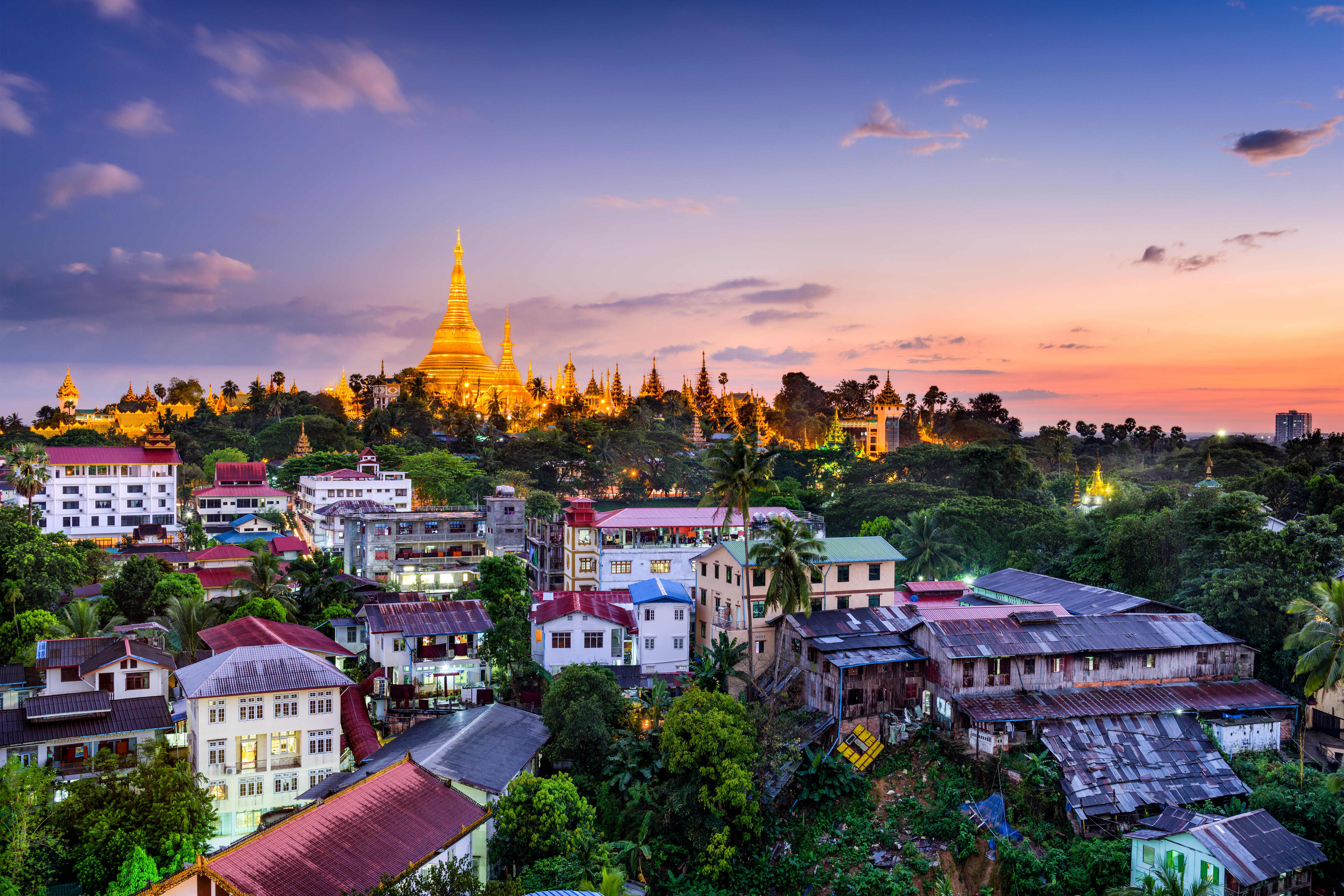More about Yangon (Rangoon)
Why Cruise to Yangon (Rangoon)?
The largest city in Myanmar, Yangon draws thousands of visitors on pilgrimages to the Shwedagon Pagoda, a famous Buddhist site
This frenetic urban hub suffers from dreadful traffic. Plus, larger cruise ships must dock at the deep-sea port, about an hour's drive from the city
Expect a mix of the modern and the traditional in this fast-changing metropolis
Yangon (Rangoon) Cruise Port Facilities?
If you're docked in the city, colonial Yangon awaits just outside the port. Head left on Strand Road from Bo Aung Kyaw Jetty, and in five minutes, you'll encounter the Strand Hotel. Head straight up Bo Aung Kyaw Street, and you'll pass a variety of retail outlets and colonial buildings. On the next major street east of Bo Aung Kyaw, about a 10-minute walk away, is Monsoon restaurant, a favorite of expats and travelers. Clustered around the gate of the port are numerous street vendors, selling tea and snacks to locals using the nearby ferry services. Taxis can be hailed at the port gate, and kids hawking postcards probably will pounce the minute you hit the street.
If you're docked at Thilawa, you're pretty much isolated, but taxis are available at the port.
Good to Know?
Yangon is generally safer than many large cities, but take the usual precautions when walking at night, and be sure to count your change carefully -- particularly if you visit a money-changer.
When visiting religious sites, modest dress (shoulders and knees covered) is required for both men and women. You will also have to remove your shoes and socks before entering.
Water is unsafe to drink, and be cautious about ice cubes, as well, unless you're at a reliable establishment. Think twice about eating street food; sanitation is iffy.
Toilets are usually of the squat variety (aside from those at hotels), and you'll need to bring your own toilet paper.
The U.S. State Department warns, "It is illegal to take pictures of Burmese officials and of certain buildings, such as military installations and government buildings. ...Do not photograph or videotape the military or police, or anything that could be perceived as being of military or security interest -- such as bridges, airfields, government buildings or government vehicles. Burmese authorities might interpret these actions as being provocative and may question and/or arrest you." Got that?
Traffic lights, including the one just outside the port at Strand Road and Bo Aung Kyaw Street, might not provide enough time for a pedestrian to cross the street. Proceed with caution.
Street dogs are ubiquitous, particularly around the port, but seem very timid for the most part. Just keep an eye out for their little "gifts," especially at night when outdoor lighting isn't the best. You'll probably also want to avoid stepping in the orange splotches left when betel nut chewers spit.
Beware of "beer gardens" you might find listed in guidebooks. The women there might be for sale.
Want more info? Here's a detailed guide to cultural "dos and don'ts" from the Myanmar Ministry of Hotels and Tourism.
Getting Around?
On Foot: If you're docked in the city, you can explore the colonial area near the port, as well as Chinatown and the Indian area. We even walked from the covered market back to our ship (a leisurely one-hour stroll). Sidewalks can be very irregular or nonexistent, so wear sturdy walking shoes, and consider carrying an umbrella to shade yourself from the sun.
By Taxi: Taxis are plentiful and relatively inexpensive. Just don't expect luxury. Old Japanese cars come to Myanmar to die, so there are plenty of raggedy Toyotas, with windows that might not work or grungy decor. Seatbelts? Ha! Rates are negotiated, not charged by the meter -- so make a deal before you get in. Hotel or restaurant staff can help.
By Bus: More than 300 public and private bus lines operate an estimated 6,300 buses around the city. Most are crowded and not air-conditioned. Our advice: Stick with taxis.
Currency & Best Way to Get Money?
There are no cash machines in Burma, and foreign credit cards are not accepted (with the exception of some upscale hotels, which tack on a surcharge). If needed, you can exchange money at banks and official money-changers.
However, in most instances, market vendors, taxis, restaurants and other entities dealing with tourists will be happy to accept U.S. dollars, but any U.S. bills must be pristine, unmarked and uncreased. We even saw a vendor balk at accepting a bill that had a slight curve from being kept in a wallet. Bring plenty of small bills if you don't want to receive kyat, the local currency, as change.
One of our fellow passengers tried to make a purchase at a supermarket that didn't take dollars. The store manager walked him down the street to a money-changer and helped him exchange for the right amount of kyat.
You might be approached on the street by people offering to change money; don't take them up on their offers, as it's against the law.
Language?
Myanmar's official language is Burmese, although the population speaks more than 30 different tongues. Children learn to read and write English in school, but people tend to be shy about using English because they don't speak it well. Those involved in tourist-related businesses will speak at least some English. Many vendors at the market will let their calculators do the talking.
Two language hints: The letters "ky" are pronounced like a cross between "ch," and "j," so the local currency, the kyat, is pronounced "chat." The letters "th" are individually voiced, so they don't make the unique sound they do in the English language. Some words to know: min ga la ba (hello), kyeizu pyu yue (please) and kyeizu tin ba de (thank you).
Where You're Docked?
Depending on the size of your ship, you will be docked in one of two locations:
In the city: Ships up to 613.5 feet can dock in the heart of Yangon, at Bo Aung Kyaw Jetty (or, in some cases, nearby Nanthida Jetty). This concrete pier is located at the foot of Bo Aung Kyaw Street, just below Strand Road. (Look for the label "Myanmar Port Authority" on Google Maps.) From dockside, it's about 500 feet before you reach the gate of the port on Strand Road. If you go out the gate on your own, be prepared to show your ship ID card to re-enter the port. The port offers no terminal or services.
Thilawa Port: Bigger ships, up to 853 feet, have to dock at this deep-sea port 15 miles south of the city. (Plans are under way to expand capacity to handle ships up to 984 feet.) It's about an hour's drive to reach the center of Yangon. The port has no services.
Docking and sailaway times must conform to the tides, and tide tables are only released a month in advance, so schedules may vary a bit from advance itineraries.




















